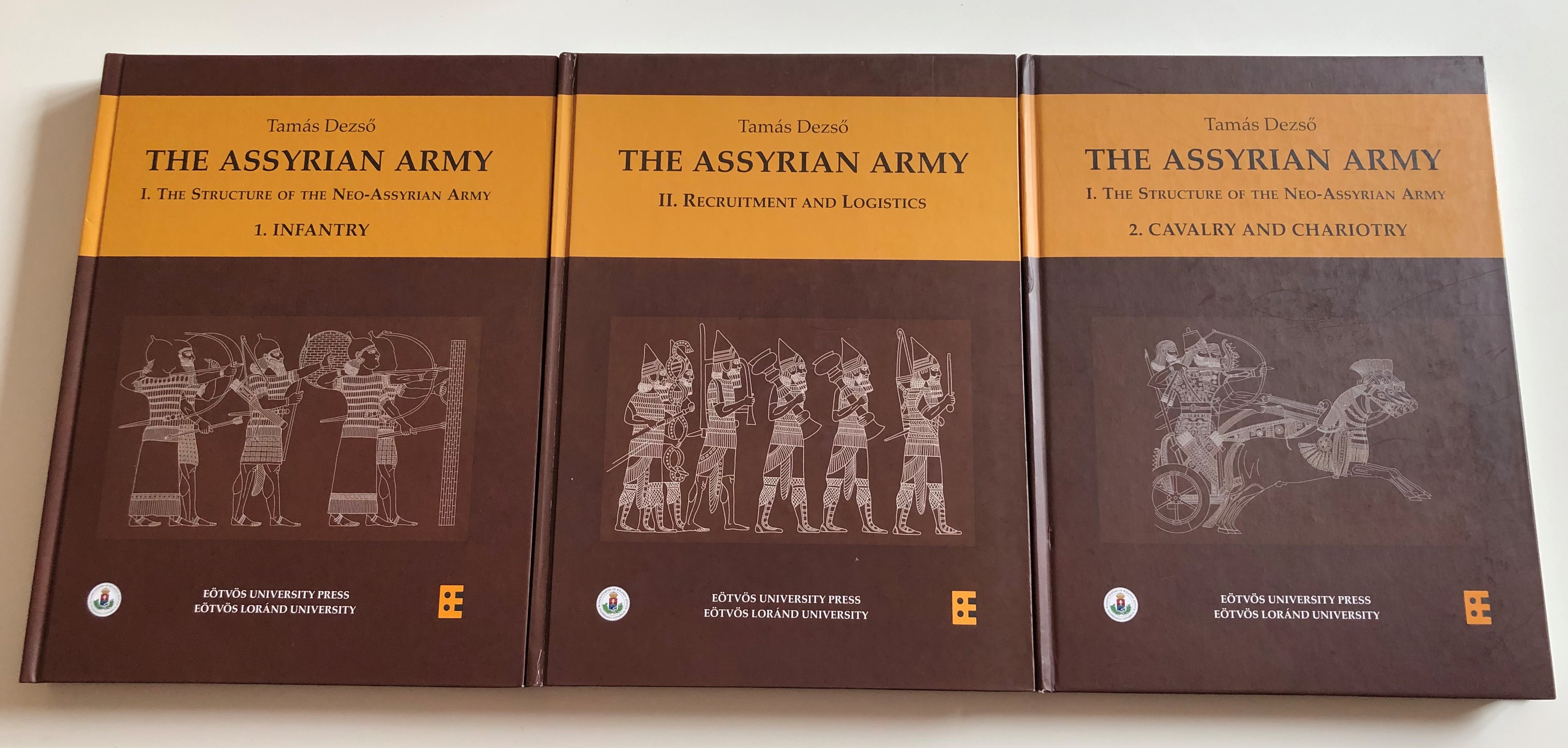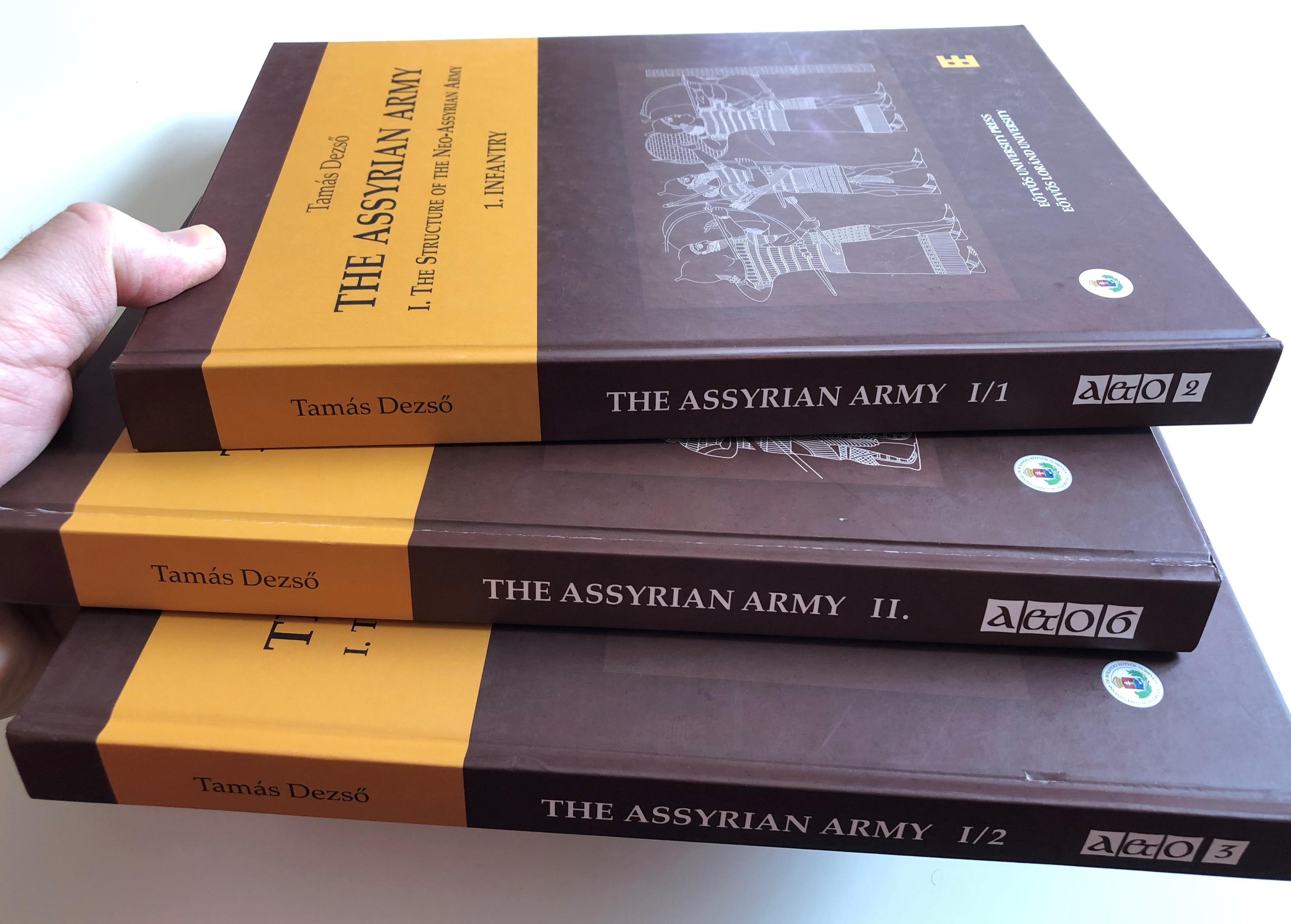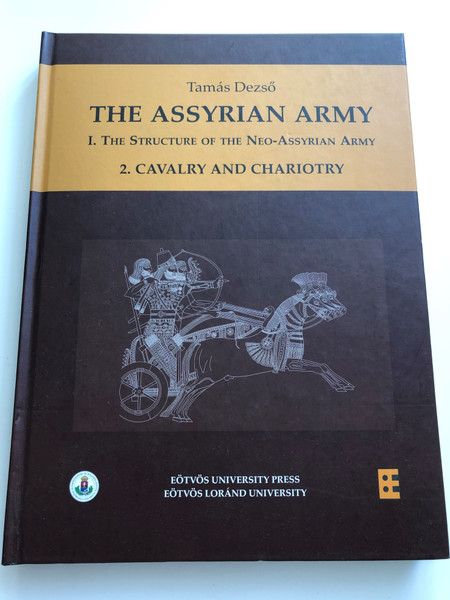Description
The Assyrian Army by Tamás Dezső - Book Set (3 Volumes)
Vol. I. The Structure of the Neo-Assyrian Army
Vol. I/1. Infantry
Vol. I/2. Cavalry and Chariotry
Vol. II. Recruitment and Logistics
Pages:
- Vol. I/1: 336 pages
- Vol. I/2: 272 pages
- Vol. II: 335 pages
Overview
This three-volume set, The Assyrian Army by Tamás Dezső, offers a comprehensive and scholarly analysis of the Neo-Assyrian military system, an essential study for Assyriologists, archaeologists, and those interested in ancient military history. The work is based on an in-depth examination of Assyrian palace reliefs and cuneiform texts, shedding light on the structure, recruitment, logistics, and operational capabilities of the Neo-Assyrian army.
The first volume is divided into two parts, focusing on the infantry and cavalry/chariotry, respectively. The second volume delves into the recruitment processes and logistical systems that supported one of the most formidable armies of the ancient world.
Published by the Institute of Ancient Studies at Eötvös Loránd University, this set is an essential reference for students and professionals in the fields of ancient studies, archaeology, and military history.
Szerzőről
Tamás Dezső
Tamás Dezső is a renowned expert in Assyriology and ancient Near Eastern studies. His work on the Neo-Assyrian military structure is a significant contribution to the field, offering detailed insights based on both visual and textual evidence from Assyrian sources. His monograph is an essential resource for scholars of ancient history and military archaeology.
Interesting Facts
- The Assyrian Army provides an in-depth look at one of the most powerful military forces in antiquity, which dominated the ancient Near East for several centuries.
- The volumes are meticulously researched, combining archaeological findings and historical texts to offer a multi-faceted view of the Neo-Assyrian military system.
- This set is part of the Monographs of the Institute of Ancient Studies, a prestigious series from Eötvös Loránd University that focuses on the ancient world.
Érdekes tények
- A Asszír Hadsereg átfogó betekintést nyújt az ókor egyik legerősebb haderejébe, amely évszázadokon keresztül uralta az ókori Közel-Keletet.
- A kötetek alapos kutatáson alapulnak, ötvözve az ásatások eredményeit és a történelmi szövegeket, hogy sokoldalú képet adjanak a Neo-Asszír hadsereg struktúrájáról.
- Ez a háromkötetes mű az Eötvös Loránd Egyetem Ókori Tanulmányok Intézetének Monográfiái sorozatának része, amely az ókori világra összpontosít.
Publishers
Eötvös University Press
Eötvös University Press is a leading academic publisher specializing in research and monographs in the fields of humanities, particularly focusing on ancient studies. This set is part of their commitment to publishing high-quality works that contribute to the understanding of ancient civilizations.
We value your feedback! Share your experience with this product to help others make informed decisions. Your review is important to us!
Hashtags
#AssyrianArmy #AncientMilitaryHistory #NeoAssyrianStudies #Assyriology #AncientNearEast #EötvösUniversityPress #ArchaeologicalStudies #MilitaryHistory #AssyrianReliefs #CuneiformStudies #AncientArchaeology #AssyrianEmpire #MilitaryStructure #ArchaeologyBooks
















